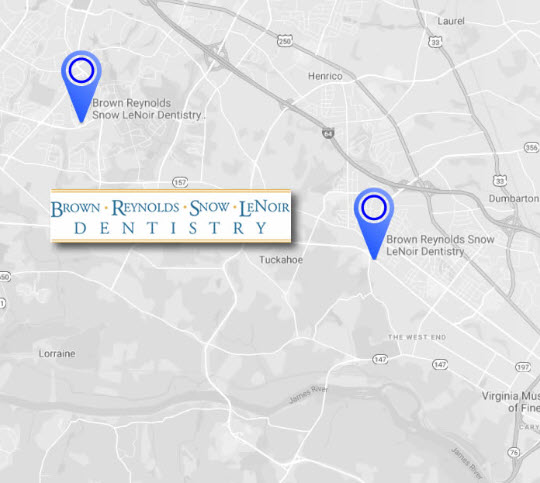Oral hygiene is crucial for maintaining a healthy mouth and preventing dental problems such as cavities, gum disease, and bad breath.
Toothbrushing is an essential part of oral hygiene that helps to remove plaque and food debris from the teeth and gums. However, with so many types of toothbrushes available in the market, choosing the right one can be overwhelming.
This article will provide a comprehensive overview of manual vs electric toothbrushes to help readers make informed decisions about which type of toothbrush best meets their oral health needs. Whether you are looking for an affordable option or prefer a brush that provides more power, this article will cover all the necessary details.
Brief overview of the importance of oral hygiene and toothbrushing
Maintaining good oral hygiene is essential for overall health. Poor oral health has been linked to several chronic diseases such as heart disease, stroke, diabetes, and respiratory infections. Brushing your teeth twice daily is one of the simplest yet most effective ways to keep your mouth healthy.
When you brush your teeth properly using fluoride toothpaste and a proper brushing technique, it removes plaque from your teeth before it hardens into tartar which causes gum inflammation or gingivitis which can lead to periodontitis if left untreated. Periodontitis is characterized by bone loss around the teeth leading to eventual tooth loss or damage.
Introduce the topic of manual vs electric toothbrushes
Choosing between a manual or electric toothbrush can be challenging since both have their own advantages and disadvantages. Manual brushes have been used for many years while electric brushes are relatively new in comparison but have gained popularity in recent times due to their various features such as timers and pressure sensors that aid in proper brushing techniques. In the following sections, we discuss various aspects of each type of brush in detail so that readers can decide which type best suits their dental needs.
Manual Toothbrushes
A manual toothbrush is a simple and traditional tool for maintaining oral hygiene. It consists of a handle that is held by the user and a head of bristles that are used to clean teeth and gums. The first toothbrushes were made from natural materials such as animal hair, bone, or wood, and were used by ancient civilizations such as the Egyptians, Greeks, and Romans.
A Cost-effective Option
One of the most significant advantages of using a manual toothbrush is its affordability. Manual toothbrushes are among the cheapest dental hygiene tools on the market and can be found almost anywhere. They are widely available in different sizes, shapes, colors, and bristle types to cater to different preferences and needs.
Easy to Use
Another advantage of using a manual toothbrush is its simplicity in use. Almost anyone can learn how to use it without guidance or training. All you need is some water and your favorite fluoride toothpaste to clean your teeth effectively.
Limited Cleaning Power
Although manual toothbrushes are affordable and easy to use, they have limited cleaning power compared to electric toothbrushes. This means that they may not remove all plaque from your teeth or reach tight spaces between them where bacteria could accumulate over time. People with poor brushing techniques or disabilities may also struggle with using manual brushes effectively.
Requires More Effort
To achieve good oral health with a manual brush requires more effort than an electric brush. One must move their hand back-and-forth across their teeth several times while applying gentle pressure on each side of each tooth’s surface area for approximately two minutes twice per day -morning after breakfast & night before bed- in order for their teeth to be thoroughly cleaned. Manual toothbrushes require the user to do all the work as opposed to electric toothbrushes.
Electric Toothbrushes
Definition and History of Electric Toothbrushes
Electric toothbrushes were first introduced in the 1950s. They are characterized by a motor that drives the brush head, which oscillates or rotates to clean teeth and gums. Today, electric toothbrushes come in a variety of types and styles, with different brush head shapes and bristle configurations.
Advantages and Disadvantages of Using an Electric Toothbrush
One major advantage of electric toothbrushes is their ability to remove plaque more effectively than manual toothbrushes. The motion of the bristles on an electric toothbrush can reach areas that a manual brush cannot, leading to better cleaning results.
Additionally, electric toothbrushes can be easier to use for those with limited mobility or dexterity in their hands. However, one major disadvantage is the expense.
Electric toothbrushes are generally more expensive than manual brushes, particularly if you opt for high-end models with features like multiple brushing modes or Bluetooth connectivity. Another disadvantage is that electric toothbrushes require charging or battery replacement to function properly.
If you are considering switching to an electric toothbrush, it may be worth it to invest in a high-quality model that will provide long-lasting results rather than opting for a cheaper option that may need frequent replacement. Ultimately, the choice between manual and electric comes down to personal preference as well as dental needs.
Comparison Between Manual and Electric Toothbrushes
Differences in Cleaning Effectiveness
One of the main differences between manual and electric toothbrushes is their cleaning effectiveness. According to a study conducted by the American Dental Association (ADA), electric toothbrushes are more effective in removing plaque and reducing gingivitis than manual toothbrushes.
The study found that electric toothbrushes were able to remove 21% more plaque than manual brushes after three months of use. Further, many electric toothbrushes come with features like timers and pressure sensors, which help ensure that users brush for an adequate amount of time and avoid damaging their teeth or gums.
Factors to Consider When Choosing Between Manual or Electric Toothbrushes
When deciding between a manual or electric toothbrush, there are several factors to consider. First, cost can be a significant factor as electric toothbrushes tend to be more expensive than manual ones. However, it is important to remember that investing in dental health can ultimately save money in the long run by avoiding costly dental procedures.
Second, personal preference plays a large role – some people may prefer the simplicity of a manual brush while others may appreciate the convenience of an electric one. Dental needs are important considerations as well – those with orthodontic appliances or other dental health issues may benefit from an electric brush’s enhanced cleaning power.
A Note on Brush Heads
Regardless of which type of brush you choose, it is important to regularly replace your brush head every three months or so (or sooner if bristles appear frayed). In addition, be sure to select a brush head with soft bristles rather than hard ones in order to avoid damaging your gums.
Overall, while both types of brushes have their advantages and disadvantages, it is clear that electrics offer superior cleaning power compared with manuals – especially for those with particular dental needs. Ultimately, the choice between manual and electric toothbrushes comes down to personal preference and budget, but it is important to prioritize good oral hygiene regardless of which type of brush you choose.
Additional Considerations for Choosing a Toothbrush
Types of Bristles: Soft Bristles vs Hard Bristles – Which is Better?
When it comes to bristles, the most popular debate centers around whether it is better to choose a brush with soft or hard bristles. While hard-bristled toothbrushes were once the norm, most dental professionals now recommend using a brush with soft bristles. Hard bristles may seem like they would do a better job of cleaning because they can remove more plaque and food particles.
However, they can also cause damage to teeth and gums. In fact, using a toothbrush with hard bristles can cause gum recession and even enamel abrasion over time.
Soft-bristled brushes, on the other hand, are gentle on teeth and gums while still being effective at cleaning. They are less likely to cause tooth sensitivity or damage the enamel.
Choosing between manual and electric toothbrushes ultimately comes down to personal preference.
However, when deciding which type of brush is right for you, it’s important to consider your individual dental needs as well as cost and ease of use.
Whether you opt for a manual or electric toothbrush, what matters most is that you are brushing your teeth twice daily for two minutes each time with fluoride toothpaste. By making oral hygiene a priority and selecting the right tools for your needs, you can maintain excellent dental health throughout your life.
Do you live in Richmond or the surrounding area? Our team is ready to help you achieve your smile goals. Schedule your appointment today.


